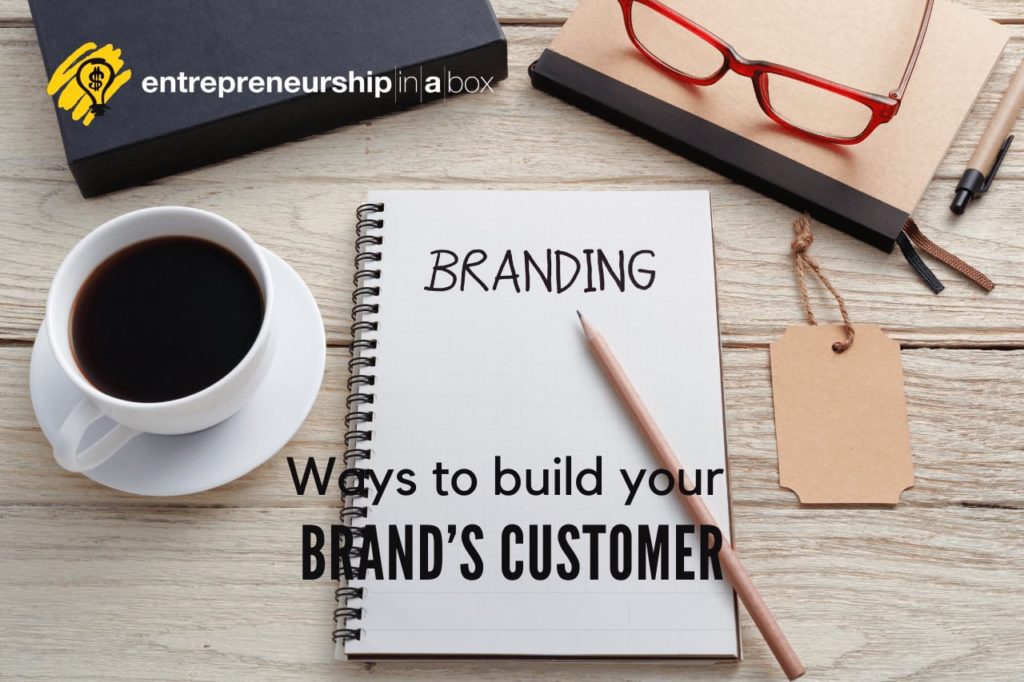In the internet age, the holy grail of business – customer loyalty – is becoming harder and harder to achieve. With so much reliance on technology, the concept of building a strong relationship with your clients can seem frustratingly elusive, particularly when it comes to e-commerce-only shops. After all, a world of competitor websites is just one click away.
However, strong branding can be one of the most successful ways to build loyalty to your company and encourage repeat custom. Here are just a few ideas for building the personality of your company and facilitating repeat business.
Understanding branding
Before looking at ways to increase your brand loyalty, it’s perhaps a good idea to first consider the concept of branding itself.
According to the respected American Marketing Association, “A brand is a name, term, design, symbol, or any other feature that identifies one seller’s good or service as distinct from those of other sellers.”
So, in very simple terms, branding can be considered as a way (more likely a combination of ways) to differentiate your products and services from others in your market sector, in turn helping to build customer loyalty and encourage repeat sales. However, in our modern connected times, branding is considerably more involved than just a simple logo or stand-out design. Rather, branding should run through all areas of your business – from the front-facing store to the back-office and beyond.
Also, as customers (existing and potential) can now engage with your company in so many different ways, your branding needs to carry through all your available sales and marketing channels – your website, your brochure, your social media channels, your email marketing, your Customer Relationship Management (CRM), etc.
In truth, successful branding is incredibly detailed encompassing a variety of techniques from Public Relations (PR), sales, and marketing (though proponents of each would likely argue they are separate forms of promotion).
Engaging with your client base to make positive associations
While the web has offered tremendous opportunities to companies, it has also greatly reduced the options for the personalized service companies used to offer. For example, with an e-commerce set-up, your customers are far less likely to have any contact at all with anyone from your company, which can make it very difficult for them to differentiate one website from another.
Of course, this faceless interaction helps keep your staffing costs down but it still removes that personal interaction favored by so many consumers and can also reduce the likelihood of repeat sales.
To counter this, you should aim to engage with your clients as much as possible, to help make them feel part of a valued community and in turn build loyalty to your product or service.
Social media and email marketing can both be invaluable tools – as can follow-up customer service, which is particularly important in building customer loyalty. Indeed, in recent surveys it was found customers expect quick and competent service with 72% expecting a reply to a query on Twitter within one hour – and 65% expecting a reply within a maximum of two hours.
The importance of customer service to understand your clients
Talking of customer service, it’s also incredibly important you take time to listen to the wants and needs of your clients. By getting under the skin of your clientele, you’ll have a far better idea of how best to serve them and will gain a better understanding of the products and services they’re actually looking for – rather than ones you guessed they might want.
In a recent survey by Bain & Company, it was found a customer is four times more likely to choose an alternative company if they encounter poor customer service compared to problems associated with price or the product itself. So, in other words, you can compete as much as you want on price or the products you stock but, if your customer service isn’t up to scratch, you’ll still be far more likely to lose follow-up sales.
When you consider the chances of selling to a new customer lie between 5%-20% (compared to 60%-70% with an existing client) the importance of client retention becomes even more evident. One of the main ways you can achieve repeat sales is through good customer service. A further survey suggests 84% of companies that looked to improve their customer experience (CX) reported increased revenue with 92% also seeing increased customer loyalty.
Take your customer feedback seriously
Of course, mistakes can and do happen and while you should strive for 100% perfection, there will be times when your service or product disappoints. In these cases, it’s essential you properly manage feedback from customers to ensure they know their complaint has been heard, taken seriously, and acted upon. Research suggests a dissatisfied client will tell between 9-15 other people of their experience – while around 13% will tell 20 or more people. Taking bad feedback seriously can greatly mitigate the chances of
Likewise, if you receive positive feedback, you should also acknowledge your client’s comments and thank them for their valued opinion.
Check your logo and, if required, consider a redesign
Even the biggest most successful companies occasionally make small tweaks to improve their logos but if you feel your company logo lacks strength or isn’t eye-catching enough, consider working with a design company to make improvements – or even perform a full redesign.
It’s not uncommon for companies to start small with a logo designed in-house only to find they outgrow their original ident. Often the CEO of a start-up turns his hand to design but a logo is frequently the first point of contact a potential client has with your company – so it really needs to stand out and send a positive message. If you think your logo is lacking punch, consider getting it redesigned.
Ensure your branding remains consistent
Consistency in the message your company conveys is incredibly important to save confusing your clients. There’s little point in spending money on an online marketing campaign building a specific message only to then change direction with your offline publications. Rather, the message needs to remain consistent across all your channels – website, social media, printed media, business cards, etc.
Also, remember to check how your logo displays on different devices and web browsers. It’s surprisingly common to see color changes or stretched/pixelated logos – particularly when viewed on different screens (mobile, laptop, desktop, TV).
Make it easy for your clients to come back
Follow-up emails are incredibly important to remind clients how valued they are but also consider other methods like encouraging clients to sign up to your social media channels (most commonly Facebook, Twitter, and Instagram). By having an established group of followers on social media, you’ll be able to continue the conversation with clients, long after their initial purchase.
Another very common method to encourage repeat sales is to offer a loyalty program to your brand – perhaps offering discounts on subsequent sales or other similar incentives. Anything that sets your company apart and makes it easier for clients to engage with your company will build your brand and encourage repeat business.





